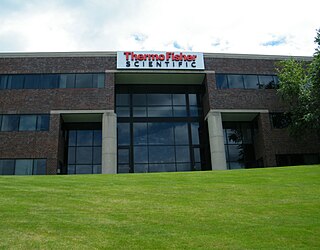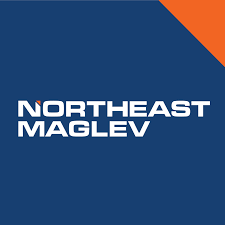Related Research Articles

The Washington metropolitan area, also sometimes referred to as Greater Washington, the National Capital Region or colloquially as the DMV, is the metropolitan area centered around Washington, D.C., the federal capital of the United States. The metropolitan area includes all of Washington, D.C. and parts of Maryland, Virginia, and West Virginia. It is part of the larger Washington–Baltimore combined statistical area, which is the third-largest combined statistical area in the country.
The Baltimore Transit Alliance (BTA) was an initiative of the Greater Baltimore Committee, bringing together businesses and non-profit organizations to advocate for better public transportation in Baltimore, Maryland. The BTA's priorities included construction of the Red Line, a new east–west light rail line through Baltimore and the Green Line, an extension of the existing Baltimore Metro Subway; enhanced transit connections between Baltimore and Washington; improved local bus service in the Baltimore region; and regional cooperation among the local jurisdictions that comprise the region.

Thermo Fisher Scientific Inc. is an American supplier of analytical instruments, life sciences solutions, specialty diagnostics, laboratory, pharmaceutical and biotechnology services. Based in Waltham, Massachusetts, Thermo Fisher was formed through the merger of Thermo Electron and Fisher Scientific in 2006. Thermo Fisher Scientific has acquired other reagent, consumable, instrumentation, and service providers, including Life Technologies Corporation (2013), Alfa Aesar (2015), Affymetrix (2016), FEI Company (2016), BD Advanced Bioprocessing (2018), and PPD (2021).

The European Metropolitan Region of Zürich (EMRZ), also Greater Zurich Area, the metropolitan area surrounding Zürich, is one of Europe’s economically strongest areas and Switzerland’s economic centre. It comprises the area that can be reached within a roughly 80-minute drive from Zurich Airport. Home to many international companies, it includes most of the canton of Zürich, and stretches as far as the Aargau and Solothurn in the west, Thurgau, St. Gallen and parts of Grisons in the east, Schaffhausen in the north and Zug and parts of Schwyz and Glarus in the south. Roughly three million people live in the area.

Karen Eileen Spilka is an American politician and attorney serving as a Democratic member of the Massachusetts Senate. She represents the towns of Ashland, Framingham, Holliston, Hopkinton, Medway and Natick in the MetroWest region of Massachusetts. She has served as the 95th President of the Massachusetts Senate since July 2018. Previously she served as a member of the Massachusetts House of Representatives from 2001 to 2005.
The Roanoke Region is the area of the Commonwealth of Virginia surrounding the city of Roanoke. Its usage may refer to the metropolitan statistical area or the Roanoke Valley, but it sometimes includes areas in the Allegheny Mountains and New River Valley which includes Alleghany County, Montgomery County, Covington, Clifton Forge, Blacksburg, Christiansburg, and Radford. Bedford County and Floyd County are sometimes included as part of the region.

The economy of the Spokane Metropolitan Area plays a vital role as the hub for the commercial, manufacturing, and transportation center as well as the medical, shopping, and entertainment hub of the 80,000 square miles (210,000 km2) Inland Northwest region. Although the two have opted not to merge into a single Metropolitan Statistical Area (MSA) yet, the Coeur d'Alene MSA has been combined by the Census Bureau into the Spokane–Coeur d'Alene combined statistical area (CSA). The CSA comprises the Spokane metropolitan area and the Coeur d'Alene metropolitan area anchored by Coeur d'Alene, Idaho. According to the U.S. Bureau of Labor Statistics, the Spokane metropolitan area has a workforce of about 287,000 people and an unemployment rate of 5.3 percent as of February 2020; the largest sectors for non–farm employment are education and health services, trade, transportation, and utilities, and government. The Coeur d'Alene metropolitan area has a workforce of 80,000 people and an unemployment rate of 6.8% as of June 2020; the largest sectors for non-farm employment are trade, transportation, and utilities, government, and education and health services as well as leisure and hospitality. In 2017, the Spokane–Spokane Valley metropolitan area had a gross metropolitan product of $25.5 billion while the Coeur d'Alene metropolitan area was $5.93 billion.
The Central Maryland Transportation Alliance (CMTA) is a coalition of Baltimore area business, civic and nonprofit groups intent on improving travel within Central Maryland, which consists of Baltimore City and the surrounding jurisdictions of Anne Arundel County, Baltimore County, Carroll County, Harford County and Howard County. The group's stated objectives are to reduce congestion, limit sprawl, increase job opportunities and make it easier, faster and more efficient for anyone to travel within Central Maryland.

Iskandar Malaysia, formerly known as Iskandar Development Region (IDR; Malay: Wilayah Pembangunan Iskandar) and South Johor Economic Region (SJER), is the main southern development corridor in Johor, Malaysia. It was established on 8 November 2006. Iskandar Malaysia, which is formed by major cities such as Johor Bahru, Iskandar Puteri and Pasir Gudang, also lies within the original Indonesia–Malaysia–Singapore growth triangle, along with Singapore and Riau, Indonesia.

The megaregions of the United States are generally understood to be regions in the U.S. that contain two or more roughly adjacent urban metropolitan areas that, through commonality of systems—of transport, economy, resources, and ecologies—experience blurred boundaries between the urban centers, such that perceiving and acting as if they are a continuous urban area is, for the purposes of policy coordination, of practical value. The antecedent term, with which "megaregions" is synonymous, is megalopolis, which was coined in relation to the Boston through Washington, D.C., corridor in the Atlantic Northeast, by Jean Gottmann in the mid-twentieth century. America 2050, a project of the Regional Plan Association, lists 11 megaregions encompassing urban regions in the United States, Canada, and Mexico. As of December 2000, these clustered networks of American cities contained an estimated total population exceeding 280 million people.

The 'World Trade Center Institute' (WTCI) operates as a private, non-profit, and non-political membership organization located in the Baltimore World Trade Center building on the Inner Harbor of Baltimore, Maryland. Financed in cooperation with area businesses and the State of Maryland, WTCI’s mission is to drive the growth of Maryland’s global business community. WTCI is one of the 320 members of the World Trade Center Association (WTCA), which operates WTCs in 96 countries around the world.

Leana Sheryle Wen is an American physician, author, professor, speaker, consultant, newspaper columnist and television commentator. She is former health commissioner for the city of Baltimore and former president of Planned Parenthood. She has written two books based on her experiences as a medical professional.
Innovation districts are urban geographies of innovation where R&D strong institutions, companies, and other private actors develop integrated strategies and solutions to develop thriving innovation ecosystems–areas that attract entrepreneurs, startups, and business incubators. Unlike science parks, innovation districts are physically compact, leverage density and high levels of accessibility, and provide a “mash up” of activities including housing, office, and neighborhood-serving amenities. Districts signify the collapse back of innovation into cities and is increasingly used as a way to revitalize the economies of cities and their broader regions. As of 2019, there are more than 100 districts worldwide.

W. Russell "Russ" Ramsey is an American financier and philanthropist, and the founder, chairman and CEO of asset management firm Ramsey Asset Management. He cofounded the Washington, D.C., investment firm Friedman, Billings, Ramsey Group in 1989, where he served as president, secretary and co-CEO through 2001. He also served as JV partner and a member of the Board of Directors until his retirement in 2007. He is also a founding investor in the non-profit investment organization Venture Philanthropy Partners.

Greater Boston, primarily Boston and Cambridge, is home to more than 1,000 biotechnology companies, ranging from small start-ups to billion-dollar pharmaceutical companies. The many universities in the area give the region a large network of scientists.

The economy of Greater Cleveland is diverse, but is based on healthcare, banking, finance, education, insurance, manufacturing, sports, and tech. The metropolitan area based in Cleveland is the 33rd largest in the country, and is home to over 2 million people.

The Guangdong–Hong Kong–Macao Greater Bay Area, commonly known as the Greater Bay Area (GBA), is a megalopolis, consisting of nine cities and two special administrative regions in South China. It is envisioned as an integrated economic area aimed at taking a leading role globally by 2035.

Northeast Maglev is a private U.S. company proposing a maglev train system in the Northeastern United States. The company aims to use the SCMaglev superconducting maglev system developed by the Central Japan Railway Company to provide 15-minute service between Baltimore and Washington, D.C., with an intermediate stop at BWI Airport, and ultimately connect major Northeast metropolitan hubs and airports with a goal of one-hour service from Washington, D.C., to New York City.
The Advanced Research Projects Agency for Health (ARPA-H) is an independent entity within the National Institutes of Health. Its mission is to "make pivotal investments in break-through technologies and broadly applicable platforms, capabilities, resources, and solutions that have the potential to transform important areas of medicine and health for the benefit of all patients and that cannot readily be accomplished through traditional research or commercial activity."
RXNT is an American privately held healthcare software technology company. The company provides ambulatory practices, hospitals, medical billers, and other healthcare professionals with digital health tools. The company was created in 1999, as a standalone e-prescribing system.
References
- ↑ "About Us". Greater Baltimore Committee. Retrieved 2023-11-27.
- ↑ "Our History". Greater Baltimore Committee. Retrieved 2023-11-27.
- ↑ "First Birthday Of The Greater Baltimore Committee". The Baltimore Sun. 6 January 1956.
- ↑ "Baltimore region selected as federal tech hub for artificial intelligence and biotechnology". Baltimore Sun. 2023-10-23. Retrieved 2023-11-27.